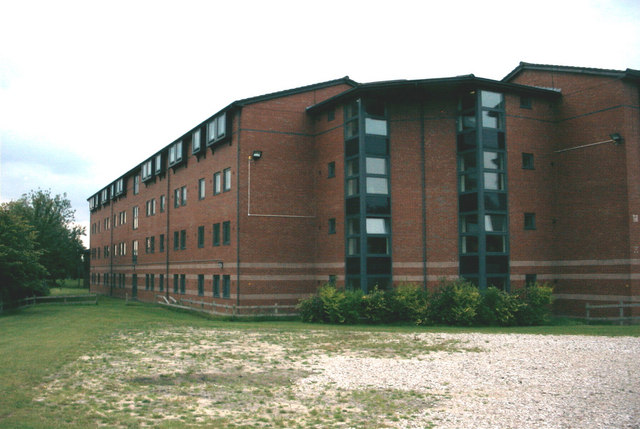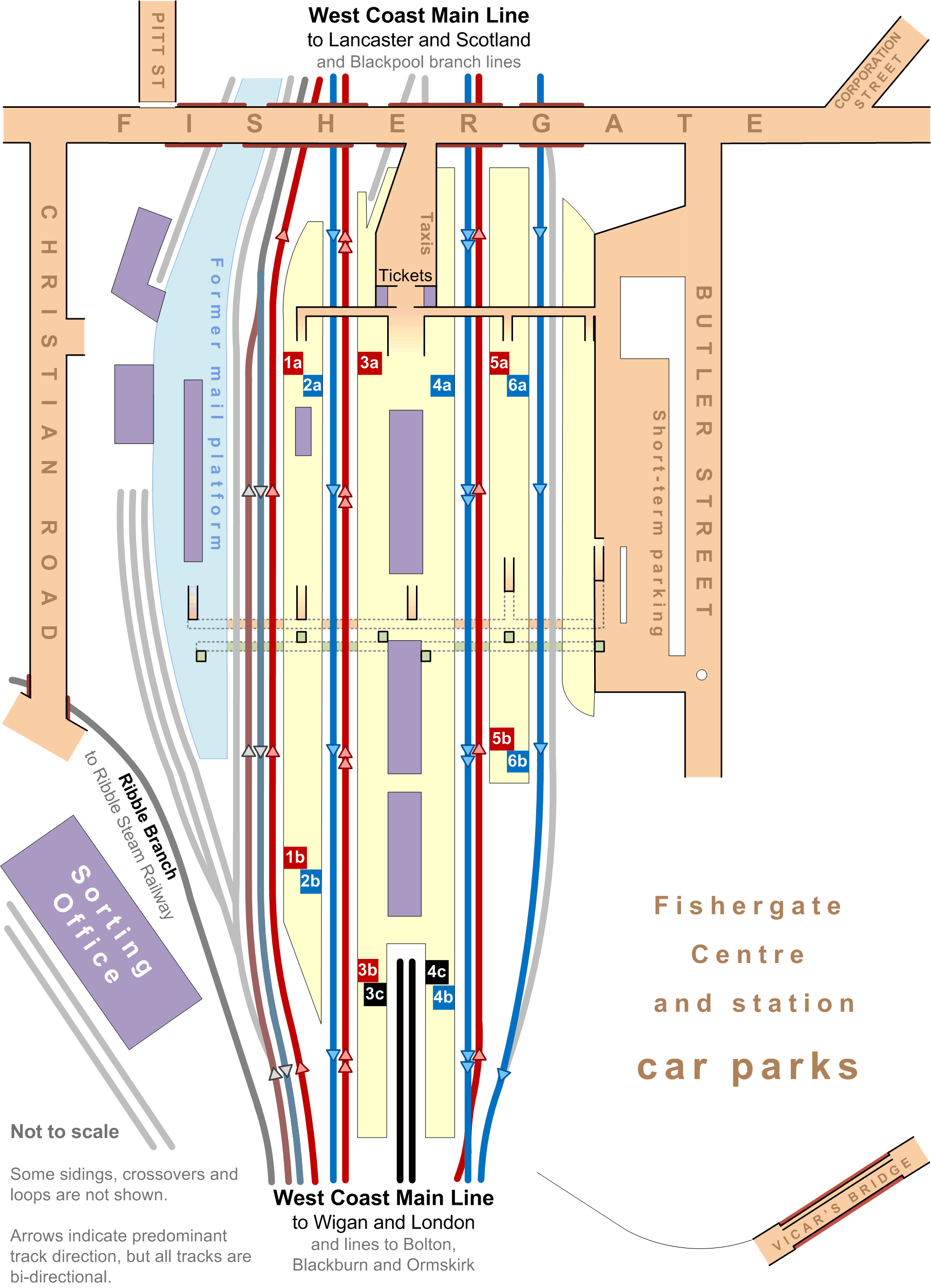|
Maudland Bridge Railway Station
Maudland Bridge railway station was once the Preston terminus of the Longridge Branch Line, in Lancashire, England. It was located on Maudland Road, between a bridge over the Lancaster Canal and Cold Bath Street. The Maudlands district of Preston gets its name from the medieval St. Mary Magdalen's leper hospital, which once stood near the present-day St Walburge's Church. History In 1850, the Fleetwood, Preston and West Riding Junction Railway (FP&WRR) built the Miley Tunnel to connect two existing lines, the Preston and Longridge Railway at Deepdale, and the Preston and Wyre Joint Railway (P&WR) at . The plan was to link Fleetwood on the Fylde coast to Skipton in the West Riding of Yorkshire. However the plan collapsed in 1852, and so the tunnel was initially used for goods traffic only. In 1856, the FP&WRR revived and diverted passenger trains via the tunnel to a new Maudland Bridge station. By 1867 the line was owned jointly by the Lancashire and Yorkshire Railway an ... [...More Info...] [...Related Items...] OR: [Wikipedia] [Google] [Baidu] |
Lancaster Canal
The Lancaster Canal is a canal in North West England, originally planned to run from Westhoughton in Lancashire to Kendal in south Cumbria ( historically in Westmorland). The section around the crossing of the River Ribble was never completed, and much of the southern end leased to the Leeds and Liverpool Canal, of which it is now generally considered part. Of the canal north of Preston, only the section from Preston to Tewitfield near Carnforth in Lancashire is currently open to navigation for , with the canal north of Tewitfield having been severed in three places by the construction of the M6 motorway, and by the A590 road near Kendal. The southern part, from Johnson's Hillock to Aspull, remains navigable as part of the Leeds and Liverpool Canal. The planned continuation to Westhoughton was never built. History Initial ideas for what would become the Lancaster Canal were formulated as a result of the high price of coal in the city of Lancaster and the surrounding area ... [...More Info...] [...Related Items...] OR: [Wikipedia] [Google] [Baidu] |
Skipton
Skipton (also known as Skipton-in-Craven) is a market town and civil parish in the Craven district of North Yorkshire, England. Historically in the East Division of Staincliffe Wapentake in the West Riding of Yorkshire, it is on the River Aire and the Leeds and Liverpool Canal to the south of the Yorkshire Dales. It is situated north-west of Leeds and west of York. At the 2011 Census, the population was 14,623. The town was listed in the 2018 ''Sunday Times'' report on Best Places to Live in northern England. History The name Skipton means 'sheep-town', a northern dialect form of ''Shipton''. Its name derives from the Old English ''sceap'' (sheep) and ''tun'' (town or village).The name is recorded in the ''Domesday Book'' of 1086. It was important during the English Civil War and was the site of prisoner of war camps during the First and Second World Wars. Skipton Castle was built in 1090 as a wooden motte-and-bailey by Robert de Romille, a Norman baron. In the 12 ... [...More Info...] [...Related Items...] OR: [Wikipedia] [Google] [Baidu] |
Former Preston And Longridge Railway Stations
A former is an object, such as a template, gauge or cutting die, which is used to form something such as a boat's hull. Typically, a former gives shape to a structure that may have complex curvature. A former may become an integral part of the finished structure, as in an aircraft fuselage, or it may be removable, being using in the construction process and then discarded or re-used. Aircraft formers Formers are used in the construction of aircraft fuselage, of which a typical fuselage has a series from the nose to the empennage, typically perpendicular to the longitudinal axis of the aircraft. The primary purpose of formers is to establish the shape of the fuselage and reduce the column length of stringers to prevent instability. Formers are typically attached to longerons, which support the skin of the aircraft. The "former-and-longeron" technique (also called stations and stringers) was adopted from boat construction, and was typical of light aircraft built until the ... [...More Info...] [...Related Items...] OR: [Wikipedia] [Google] [Baidu] |
Maudlands Railway Station
Maudlands railway station (also known as Maudland railway station, or Preston Maudland(s)) was the original Preston terminus of the Preston and Wyre Joint Railway to , in Lancashire, England. It was located on Leighton Street. The line and the station opened on 15 July 1840. The line crossed the Lancaster and Preston Junction Railway (L&PJR) on the level, immediately to the west of the station. By 1844, most of the line's trains were diverted along the L&PJR's line to use the main Preston Station instead. However, Maudlands Station continued to be used for excursions and as a goods station A goods station (also known as a goods yard or goods depot) or freight station is, in the widest sense, a railway station where, either exclusively or predominantly, goods (or freight), such as merchandise, parcels, and manufactured items, are l ... for several decades before its eventual closure and demolition, by 1885, to make way for an extension of the Longridge Branch Line. The re ... [...More Info...] [...Related Items...] OR: [Wikipedia] [Google] [Baidu] |
Network Rail
Network Rail Limited is the owner (via its subsidiary Network Rail Infrastructure Limited, which was known as Railtrack plc before 2002) and infrastructure manager of most of the railway network in Great Britain. Network Rail is an "arm's length" public body of the Department for Transport with no shareholders, which reinvests its income in the railways. Network Rail's main customers are the private train operating companies (TOCs), responsible for passenger transport, and freight operating companies (FOCs), who provide train services on the infrastructure that the company owns and maintains. Since 1 September 2014, Network Rail has been classified as a "public sector body". To cope with fast-increasing passenger numbers, () Network Rail has been undertaking a £38 billion programme of upgrades to the network, including Crossrail, electrification of lines and upgrading Thameslink. In May 2021, the Government announced its intent to replace Network Rail in 2023 with a n ... [...More Info...] [...Related Items...] OR: [Wikipedia] [Google] [Baidu] |
University Of Central Lancashire
, mottoeng = "From the Earth to the Sun" , established = as Institution for the Diffusion of Useful Knowledgere-established 1992 (University status granted) , type = Public , chancellor = Ranvir Singh , vice_chancellor = Graham Baldwin , students = () , undergrad = () , postgrad = () , city = Preston (Main)BurnleyCyprusWestlakes, Cumbria , campus = Urban , former_names = Harris Art College, Preston Polytechnic, Lancashire Polytechnic , colours = , website = , logo = , logo_caption = , logo_size = , footnotes = , affiliations = University AllianceUniversities UK , coor = , pushpin_map = United Kingdom Preston central The University of Central Lancashire (abbrev ... [...More Info...] [...Related Items...] OR: [Wikipedia] [Google] [Baidu] |
Maudland Railway Station
Maudlands railway station (also known as Maudland railway station, or Preston Maudland(s)) was the original Preston terminus of the Preston and Wyre Joint Railway to , in Lancashire, England. It was located on Leighton Street. The line and the station opened on 15 July 1840. The line crossed the Lancaster and Preston Junction Railway (L&PJR) on the level, immediately to the west of the station. By 1844, most of the line's trains were diverted along the L&PJR's line to use the main Preston Station instead. However, Maudlands Station continued to be used for excursions and as a goods station for several decades before its eventual closure and demolition, by 1885, to make way for an extension of the Longridge Branch Line The Preston and Longridge Railway (P&LR) was a branch line in Lancashire, England. Originally designed to carry quarried stone in horse-drawn wagons, it became part of an ambitious plan to link the Lancashire coast to the heart of Yorkshire. The .... The rem ... [...More Info...] [...Related Items...] OR: [Wikipedia] [Google] [Baidu] |
Preston Railway Station
Preston railway station in Preston, Lancashire, England, is an interchange railway station on the West Coast Main Line, half-way between London Euston and Glasgow Central (206 miles from London Euston, 194 miles from Glasgow Central). It is served by Avanti West Coast, Northern Trains and TransPennine Express services, plus Caledonian Sleeper overnight services between London and Scotland. It is also served by the Calder Valley line to and , and by branch lines to Blackpool, Ormskirk, and Colne. The North Union Railway opened a station on the site in 1838. It was extended in 1850, with new platforms under the separate management of the East Lancashire Railway, and by 1863 London–Scotland trains stopped here to allow passengers to eat in the station dining room. The current station was built in 1880 and extended in 1903 and 1913, when it had fifteen platforms. A free buffet for servicemen was provided during both World Wars. The East Lancashire platforms were demolished ... [...More Info...] [...Related Items...] OR: [Wikipedia] [Google] [Baidu] |




